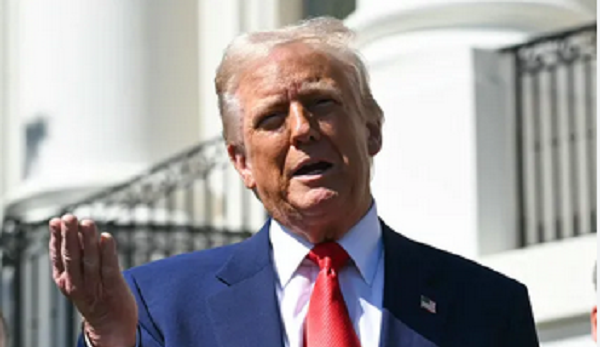Having been a principal target: Canada’s economy in flux as Trump starts cutting tariff deals
Having threatened to blow up global trade, U.S. President Donald Trump appears to have gotten cold feet.
Over the past month, he’s paused his steepest tariffs, granted carve-outs for crucial industries and begun cutting deals – including a blockbuster announcement on Monday that saw the U.S. lower its duties on Chinese goods to 30 per cent from 145 per cent for three months, with China making a similar concession.
Dialling down the temperature in the global trade war has improved the outlook for Canada, economists say. But it hasn’t fundamentally changed the country’s economic trajectory, which is mostly downhill in the coming quarters.
Key Canadian industries still face high U.S. tariffs, businesses are pausing new hiring and investment amid widespread uncertainty, and hard economic data in recent weeks shows tariffs are already starting to bite.
Moreover, having been a principal target of Mr. Trump’s aggression earlier this year, Canada is now just one of dozens of countries jockeying for relief from the White House. And with the U.S. rushing to do deals with other countries before the 90-day reprieve Mr. Trump announced in early April comes to an end, Canada may be near the back of the line.
“I don’t think we’re on their A-list of needing to get results,” Beata Caranci, chief economist at Toronto-Dominion Bank, said in an interview.
“China and the EU make the hot list. But because we have so many concessions already under the USMCA, they can deprioritize us,” Ms. Caranci said, referring to the United States-Mexico-Canada Agreement that governs continental free trade.
There’s little question that Canada has emerged from the early months of Mr. Trump’s presidency in a better position than many had feared.
Having slapped 25-per-cent tariffs on Canadian goods in early March, Mr. Trump granted an exemption for products that meet USMCA rules of origin – a carve-out that will allow 80 to 90 per cent of Canadian exports to continue to cross the southern border tariff-free, economists say. Canada then avoided the baseline 10-per-cent tariff Mr. Trump placed on most other countries on April 2, which he dubbed “Liberation Day.”
Tariffs on Canada’s auto sector were also watered down after lobbying from the big American automakers. Vehicles made in Canada don’t face tariffs on the portion of the car – often a large slice – made up of U.S. auto parts, and auto parts themselves that comply with USMCA rules face no tariffs.
“There was the risk that Canada was going to have significantly higher tariff rates imposed than other parts of the world, and that would hurt our competitiveness in the U.S. import market,” Nathan Janzen, assistant chief economist at Royal Bank of Canada, said in an interview.
“That dynamic really pivoted dramatically in April to where we swung Canada to actually having the lowest – once you include those USMCA exemptions – tariff increase of any country in the world imposed by the U.S. administration.”
This relative advantage, however, doesn’t change the fact that Canada’s highly trade-dependent economy is facing a major shock, with potentially more tariffs on the horizon for lumber, copper, other critical minerals and even movies.
Surveys that capture how Canadian consumers and businesses feel have been sour for months, and that has begun showing up in the hard economic data. The April job numbers, published by Statistics Canada last week, showed the unemployment rate rise to 6.9 per cent from 6.7 per cent the prior month, with 30,000 job losses in manufacturing industries.
The latest manufacturing sales numbers, published Thursday, showed a 1.4-per-cent month-to-month drop in March, led by a 6.5-per-cent fall in primary metal sales.
“From a market perspective, there’s been a lot of good news, just in terms of how the markets reacted,” said Ms. Caranci of TD, pointing to the rebound in U.S. stock markets in recent weeks, and the record high level of Canada’s benchmark stock index.
“But in terms of what we’re seeing in Canada, the negative sentiment data is directly correlating to the hard economic data, which we don’t see in the U.S. And that transmission has been really fast in Canada,” she said.
She expects a recession in the coming quarters, with a further 100,000 job losses by the third quarter. RBC’s Mr. Janzen is slightly more optimistic, given that retail sales have been holding up fairly well, as have card transactions tracked by the bank.
Tony Stillo, director of Canada economics at Oxford Economics, expects a three-quarter recession starting in the second quarter of this year. But recent trade-policy developments, in both Canada and the U.S., mean that a recession will likely be shallower than he had previously anticipated, he said in an interview.
Crucially, the federal government has watered down its own countertariffs on U.S. goods, which suggests that there will be less of a price shock for Canadian consumers and less disruption for Canadian companies bringing in inputs and equipment from the U.S.
In mid-April, Ottawa said it would offer tariff remission for U.S. goods used in Canadian manufacturing, food processing and packaging, as well as on products that support health and public safety. It’s also offering lower tariffs on U.S. vehicle imports for companies that retain production in Canada.
“This is a massive watering down of the countertariffs that Canada was going to put on,” said Mr. Stillo, adding that this will ease inflationary pressures and make the Bank of Canada’s job easier.
As has been the case since Mr. Trump returned to office, the overall outlook for Canada is dependent on what happens in the White House. Carlo Dade, director of international policy at the University of Calgary’s School of Public Policy, said the latest agreements and exemptions announced by Mr. Trump amount to a “weak ceasefire” more than a truce in the global trade war.
Until the U.S. Congress starts putting constraints on Mr. Trump’s use of emergency powers to unilaterally raise and lower tariffs, America’s trade partners will be living with uncertainty, Mr. Dade said. That makes cutting sustainable deals to lower tariffs or renegotiating the USMCA a tall order. But at least, he said, Canada is no longer Mr. Trump’s main punching bag.
“We’re off to the side. And given what’s flying around, good and bad, that may not be the worst place to be,” he said.
“Sometimes you don’t want to be the centre of attention, especially when the other guy’s holding a gun.”
This article was first reported by The Globe and Mail















